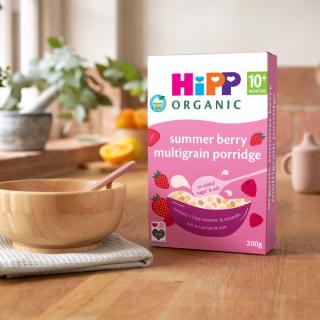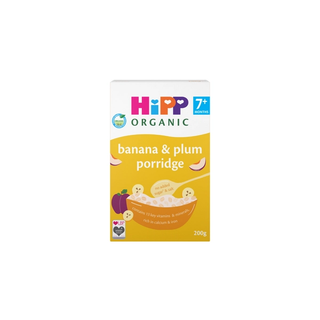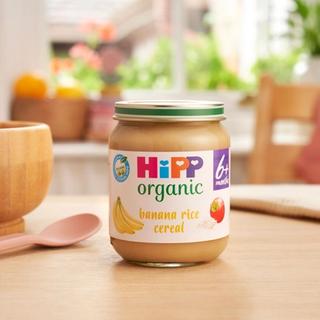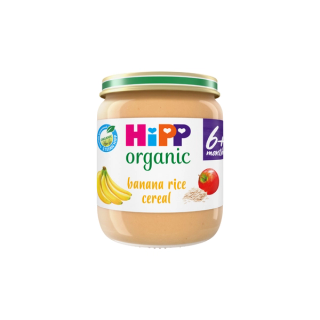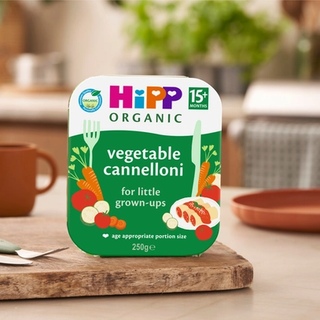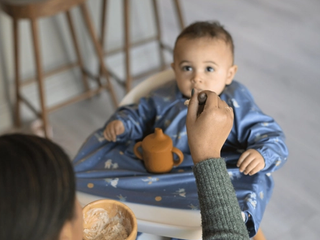
- Home
- Advice Hub
- Baby
- Weaning
- First Weaning Foods
Weaning Guide: What Foods to Introduce and What to Avoid
Learn more about which foods to start weaning with and which foods and drinks are best to avoid.
Introducing solids to baby can often be an emotional time for parents. There may be excitement at the thought of offering all your favourite foods and having baby at the table with you. Or there maybe fear of the unknown, wondering how you’ll fit all the meals in around naps and milk feeds or whether your baby will take to all the new flavours and textures you’re going to offer.
The WHO and Department of Health in the UK both recommend offering solid foods to babies from around six months of age. Try to think less about the date on the calendar and focus on the signs that your baby is ready. There are 3 signs to look out for:
- Sitting up in a high chair and holding their head steady.
- No longer having a tongue thrust reflex (this is where your baby pushes items out of their mouth with their tongue)
- Being able to pick items up in their fist and put it into their mouth
Making sure your baby is ready will make the process much easier for all of you. It can be tempting to rush in and move your baby onto solids if everyone else is getting started before you, but waiting until the right time means you’re more likely to have a successful start.
What are the best foods for weaning?
The first few weeks of weaning are about introducing the concept of foods, exploring new tastes, and establishing a new routine. Nutrition becomes more important as weaning progresses.
Don’t put any pressure on your baby at any stage of weaning and don’t expect them to eat everything you offer first time round. It’s important to stay relaxed, have some fun and encourage them to explore the new foods you are offering them.
How should foods be given?
Foods can be given via spoon feeding and from six months as finger foods for self-feeding.
Finger foods are great for helping with the development of motor skills and independence. We have a blog that goes into more details on finger foods. Offer soft, chip shaped and easy-to-hold foods like steamed vegetables, soft fruits or fingers of toast and omelette. These foods allow your baby to explore different textures while practicing placing food into their mouths and biting.
Start weaning with greens and vegetables
It is recommended that you start your baby’s weaning journey with green vegetables to help them adjust to enjoying bitter flavours. You may also find that they eat vegetables better as a toddler if you do this – and any help you can get with your toddler eating vegetables is worth it in our book!
Once you have given a week or two of green vegetables it is time to start offering more variety and bringing in different food groups. Your baby is going through a period of rapid growth during their first year of life and has high energy needs compared to adults, so choosing nutritious foods is important.
Introducing protein
Building your baby’s meals is similar to how we build our own; we tend to subconsciously include a variety of food groups on our plate. It is unusual for someone to just put a plate of vegetables or a plate of meat. For example if you’re having pasta, you might add a meat and tomato sauce and sprinkle cheese on top. Or you might make a meat or lentil curry and put rice and yoghurt on the side. You should do the same with you baby; having days on end of vegetables or a bowl of sweet potato is not going to give them the nutrition that they need!
Introducing iron
As well as giving a variety of food groups, an essential part of your baby’s diet are iron rich foods as they are key to the development of the brain and eyes. Unfortunately, after six months old your baby’s natural iron levels deplete and breast milk and formula does not provide enough iron to meet the growing needs of your little one, so getting it from their diet is really important. If you make sure there is an iron rich food present at every meal you can feel confident they are getting enough. Some examples are red meat, eggs, lentils, dark green leafy vegetables and cereals with added iron such as our baby porridge.
Foods to limit or avoid
Thankfully there aren’t many foods you need to completely avoid during weaning which hopefully makes life a little easier.
- Whole nuts: Children under 5 shouldn’t have whole nuts, as these can cause choking. Infants should also avoid chopped nuts, so stick with ground nuts or smooth nut butters. If you use a thick nut butter, you’re best to loosen it with a bit of warm water so that it can be spread thinly as a thick spread of nut butter is also a choking hazard.
- Honey: Until your baby is a year old you should avoid honey completely as it is generally unpasteurised and can contain harmful bacteria that can cause infant botulism. Although it is rare, it can be fatal.
- Fish containing mercury: We don’t tend to eat much of these fish in the UK, but it’s good to be aware that you should avoid fish that may contain high levels of mercury, such as shark, swordfish and marlin. The smaller bodies of young children are more vulnerable to the effects of these pollutants.
There are also some foods that are good to limit. These are the types of foods that aren’t going to harm your baby from one exposure but are better given in small amounts.
- Salt: under a year old your baby should have a maximum of 1g of salt a day. Aim to make as much food from fresh as you can and avoid high salt foods such as stock cubes, gravies and powdered flavourings.
- Sugar: When we think about limiting sugar, we are mainly thinking about added sugars, such as biscuits, cakes, chocolate and anything with sugar as an ingredient. Keeping these to a minimum will help to protect baby’s teeth and minimise the development of a sweet tooth.
Does my baby need vitamins?
The NHS website states that “The government recommends all children aged 6 months to 5 years are given vitamin supplements containing vitamins A, C and D every day.
Babies who are having more than 500ml (about a pint) of infant formula a day should not be given vitamin supplements. This is because formula is fortified with vitamins A, C and D and other nutrients.
Babies who are being breastfed should be given a daily vitamin D supplement from birth, whether or not you're taking a supplement containing vitamin D yourself.”
Vitamin D for babies is recommended as it’s very difficult to get this nutrient from food alone. From birth to one year, babies need between 8.5 and 10 micrograms of Vitamin D. Vitamins for a one year old should contain 10 micrograms of vitamin D as well as vitamins A and C.
Foods that might cause an allergic reaction
It’s understandable if you’re worried about your baby having a reaction, the unknown of it all before you get started and the scary stories, we often see in the media can leave us feeling anxious. Around 6-8% of babies will react to a food (BSACI) with the most common allergens being milk, egg, peanuts, tree nuts, sesame seeds, fish, shellfish, wheat & soy. You can read more about introducing allergens during weaning here.
Giving the main allergens really doesn’t need to be complicated, but there are a few things to consider when doing so. If you would like to know more, we have some great information in our BabyClub, which you can join for free. Join our BabyClub today.
Getting textures into your baby’s meals
Between 6-9 months of age is a good time to start really mixing things up with the variety of textures you are offering at your baby’s mealtimes. You want them to develop the skills needed to eat a wide and varied diet, similar to the rest of the family. This involves a gradual transition from just purees to foods that have a mashed texture with some soft lumps, moving onto minced foods with bigger soft lumps, to chopped foods with a more solid texture.
Research has shown that babies who aren’t given lumpy solid foods until after 9 months of age are more likely to be difficult, picky eaters. These problems are still evident at 15 months and even at 7 years of age. It appears that there is a critical period in the second half of infancy during which babies more readily accept new tastes and textures and consequently it is important that babies are encouraged to eat more challenging textures during this period (SACN 2018).
Some babies find the move from smooth weaning foods with no lumps to the lumpier foods quite difficult, but it is worth persevering. If you’re preparing your own baby foods, then you should adjust the consistency according to what your baby can cope with, aiming for more and more lumps and a coarser texture as you go. Start by introducing soft lumps at first by mashing soft fruits, cooked vegetables or cooked pasta, perhaps with some mashed fish or pureed meat.
If you are using commercial baby foods, offer foods that are specially designed for this next stage of feeding, labelled as suitable for 7 months+. Don’t be surprised if your baby spits out lumps to begin with, or if lumps get coughed back for more chewing – this is normal.
What drinks to offer during weaning
Until your baby reaches a year old the only drinks they need are breastmilk, formula milk or water. Try to avoid the temptation to offer juices or other drinks as it can be very difficult to move back to plain water once these have been given. Drinks during weaning are more about teaching your little one how to drink out of a cup and learning to enjoy water than they are about hydration as most babies get all the fluid they need from their milk.
In the UK you can offer tap water straight out of the tap without pre boiling and there’s no need to sterilise cups either. In summary, keep weaning simple as this is more likely to create positive mealtime experiences for you and your baby. Aim to offer a variety of foods from different food groups, increasing in texture from six months of age and including all the main allergens over time to ensure your baby stays safe, gets the nutrition they need and acquires the vital skills for eating.
Important Notice
We recognise that breastfeeding is best, providing many benefits to both mothers and infants. We also recognise that every parenting journey is unique, and we are here to support you through this journey, however you choose to feed your baby.
If you choose to breastfeed it is important that you eat a healthy well-balanced diet in preparation for and during breastfeeding. Before deciding to combination or formula feed your baby, note that reducing or stopping breastfeeding can be difficult to reverse. Babies feed on demand, so replacing breastfeeding with infant formula milk may reduce your supply. Formula feeding has both social and financial implications. Talk to your midwife or health visitor for guidance and support.
If you choose to use formula milk, make sure you choose the right milk for your baby’s age and prepare and store it according to the instructions on the packaging. Not doing so may make your baby ill. Infant formula is a nutritionally complete breastmilk substitute that can be used from birth. From 6 months you can choose to use follow on milk as part of a mixed diet and from 12 months you have the option to move onto growing up milk alongside a balanced diet.




